What to wear hiking: choosing the best kit for your adventures this winter
Our ‘what to wear hiking’ guide will help you get kitted out with the perfect gear for awesome hiking trips this winter

In the winter months, you need to put more thought into what to wear hiking. Summer is all about breathability and comfort. Winter is about keeping you alive: insulation against the cold and protection from the elements.
Of course, ‘there’s no such thing as bad weather, only inappropriate clothing’ legendary explorer and adventurer Sir Ranulph Fiennes – and a few others, too – once said. This is from a man who has experienced the most extreme conditons on planet Earth. A blizzard is much more bearable if you get your layering system right and have the best waterproof jacket and pants combo.
So, when you consider what to wear hiking, the conditions you are going to be going out in should be top of mind. This winter, many city dwellers will be seeking a hefty dollop of escapism on coastal paths, forest tracks and mountain trails. With conditions likely to be changeable to say the least, it’s the spares you carry in your hiking backpack that suddenly become just as important as the clothes you are wearing.
From your footwear up to your hiking hat, we detail the considerations you need to make for hitting the trails this season and the pros and cons of different options. As well as clothes, we also consider backpack choice and the accessories that will enhance your hiking experience.
Meet the experts

Sian is a passionate hiker and all-round lover of the outdoors. She adores being out in the backcountry during the cold season and often seeks out freezing wild swimming spots. She knows that having the right kit is half the battle when it comes to staying safe in the more challenging winter months.
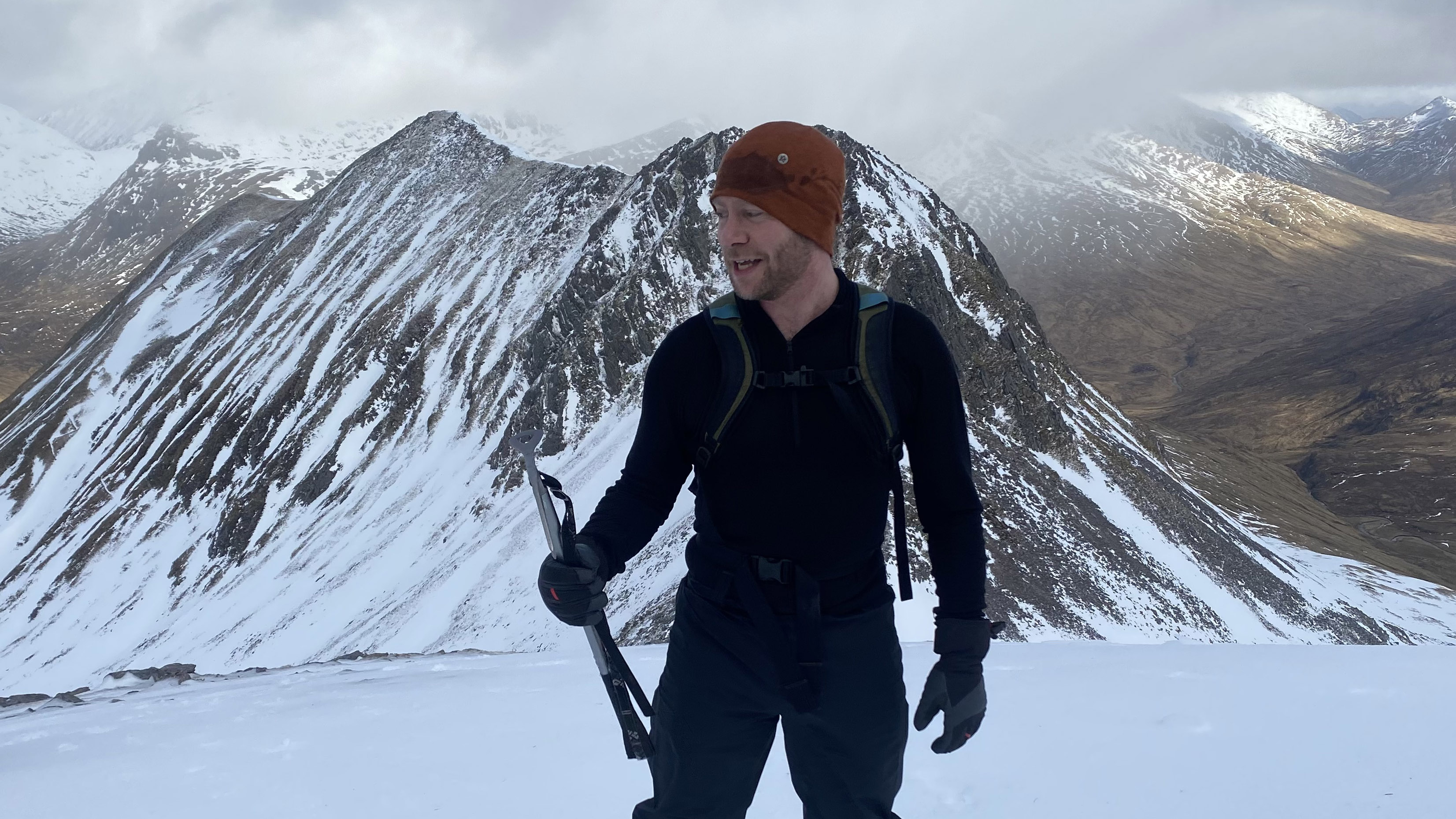
Alex is a qualified Mountain Leader and loves nothing more than escaping into the backcountry, particularly during the winter months. He's learned many lessons during his apprenticeship with the high places and now takes great pleasure in helping others to access the great outdoors.
Today's best deals
1. Hiking footwear
- For mountain hiking, high cut leather buts with grippy soles are ideal
- For summer walks, lighter, lower cut breathable hiking shoes are better
- For scrambles and easy rock climbs, approach shoes provide the ideal grip
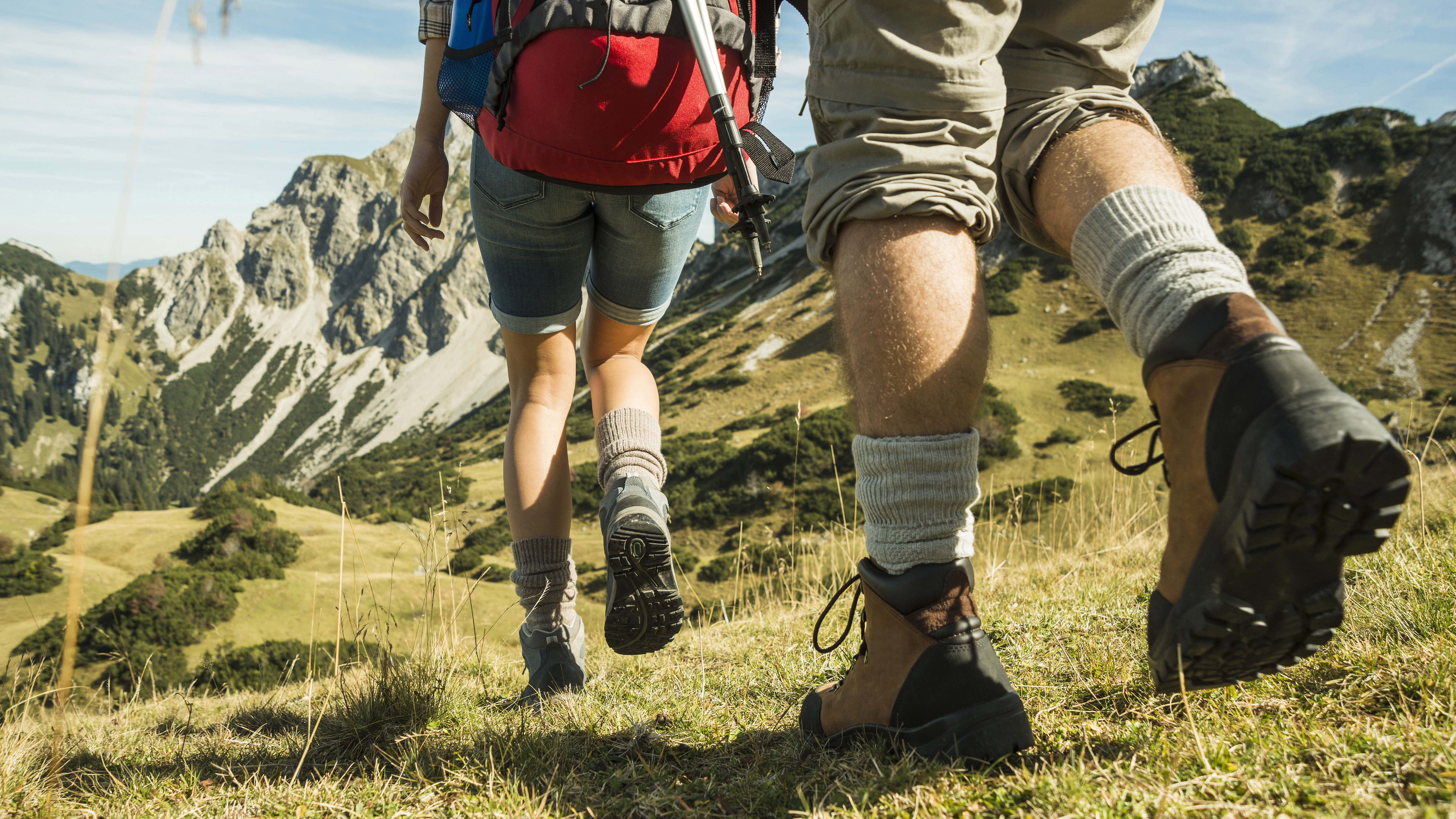
When considering what to wear hiking, hiking boots or shoes are arguably the most important aspect, so it’s worth investing in sturdy pair that will last. Leather hiking boots are warm in winter, while fabric boots are more breathable and better suited to spring and summer. There's always the best vegan footwear if you're wanting to avoid animal products too.
Pick boots that suit your planned activities. If you’re heading into the hills and you’re likely to encounter rainy weather, snow, rocks and stream crossings, then choose boots with thick, grippy, robust rubber soles (look out for Vibram) and that are fully waterproof. Try footwear on in-person and check they fit perfectly, with no rubbing or pinching.
If you're looking ahead to easier walks in spring and summer, there’s no point going for a super technical pair, which will be heavier and stiffer. A pair of hiking shoes might be better if this is you, or even walking sandals, but make sure you choose a pair designed specifically for hiking, with grippy rubber soles, wide adjustable straps and good heel support.
All the latest inspiration, tips and guides to help you plan your next Advnture!
If you enjoy scrambles and easy climbs, you might want to consider approach shoes, which occupy the middle group between hiking shoes and climbing shoes. They're much more comfortable for walking in than climbing shoes but their sticky rubber soles give you much more grip on technical, rocky terrain than hiking shoes.
2. Hiking socks
- Thick hiking socks keep your feet warm and prevent blisters
- Merino socks are nicely breathable and also odor resistant
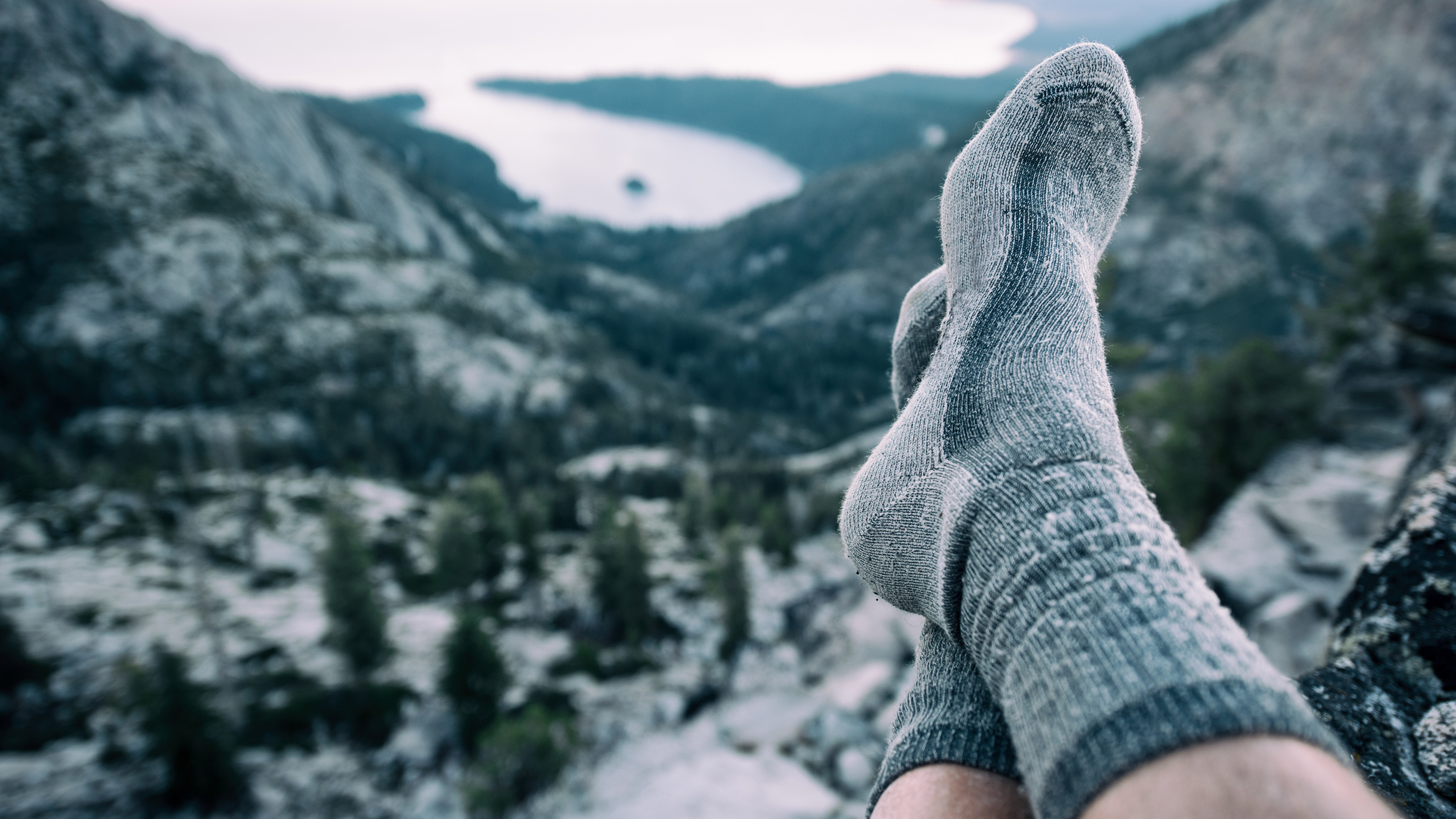
The best hiking socks work alongside your boots to keep you powering along the trails for miles and miles in comfort. Well-padded hiking-specific socks will stop any blisters and keep toes toasty in cold weather. Look for wool or merino wool socks (for example Smartwool or 1000-Mile), which are breathable and are naturally antimicrobial, and check the pair you pick have reinforced heels. In summer, swap thicker hiking socks for a lighter, breathable cotton pair such as Mountain Warehouse’s IsoCool range.
3. Base layers
- Thermal base layers will help to keep you warm on cold weather hikes
- Merino wool base layers have great warmth to weight ratios, are breathable, moisture wicking and anti-odor
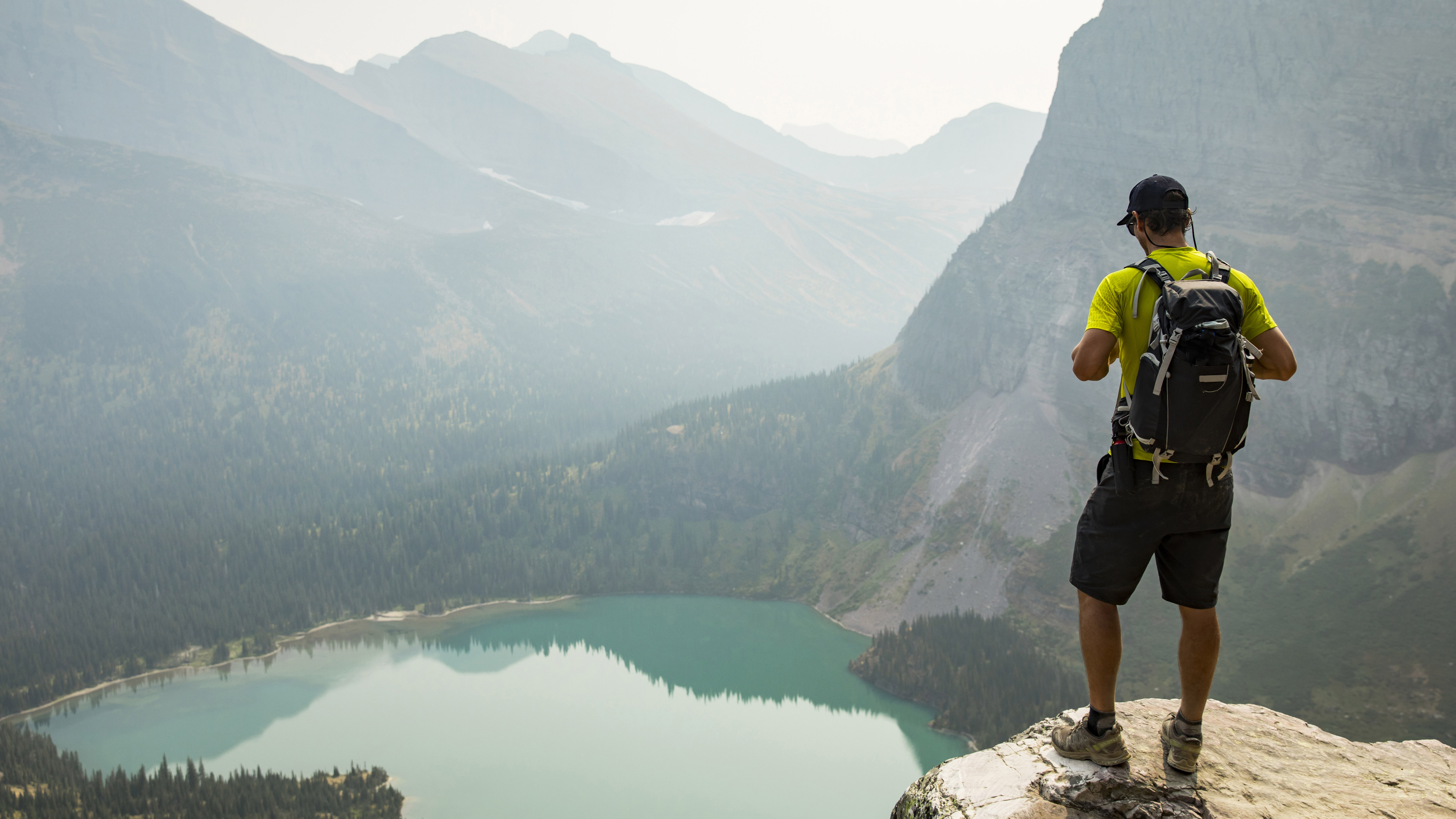
A decent base layer is the foundation of your layering system, a crucial aspect to get right when thinking about what to wear backpacking.
It may sound like something your granny would advise, but it really is worth investing in a great set of thermals to wear as a base layer on cold weather hikes. Look for inner layers made with merino wool, which is warm, while also sweat-wicking and naturally antibacterial – we recommend Icebreaker’s excellent base layer range for men and women. At the moment, there's a growing trend for yak wool, which has similar properties to merino, spearheaded by the manufacturer Kora.
On summer hikes, swap your base layers for lightweight synthetic t-shirts and shorts.
4. Mid-layers
- A mid layer is any top you wear between your base layers and waterproof shell
- Mid layers can be fleeces, down jackets, technical t-shirts, hoodies et al
- Multiple thin layers are better than one thick layer

Heading out in chilly conditions? Pop an insulated mid-layer over your base layers to trap in body heat. A mid-layer can range from a technical t-shirt, or a shirt (handy for using the collar to protect your neck against sunburn) through to a warm fleece jacket, a gilet, a thick hoody-style layer or an insulated down jacket or a synthetic option (some of the latter are also water-resistant enough to work alone in a light shower). Its worth informing yourself regarding ethical down, before committing to a down jacket.
Always have spare mid-layers if you can. Many thin layers insulate better than one thick one. Having multiple mid-layers gives you greater control over your temperature, rather than the all-or-nothing approach of a really thick fleece.
5. Waterproof jacket
- A quality waterproof is essential for adventurous hiking
- A waterproof provides an effective barrier against wind and rain
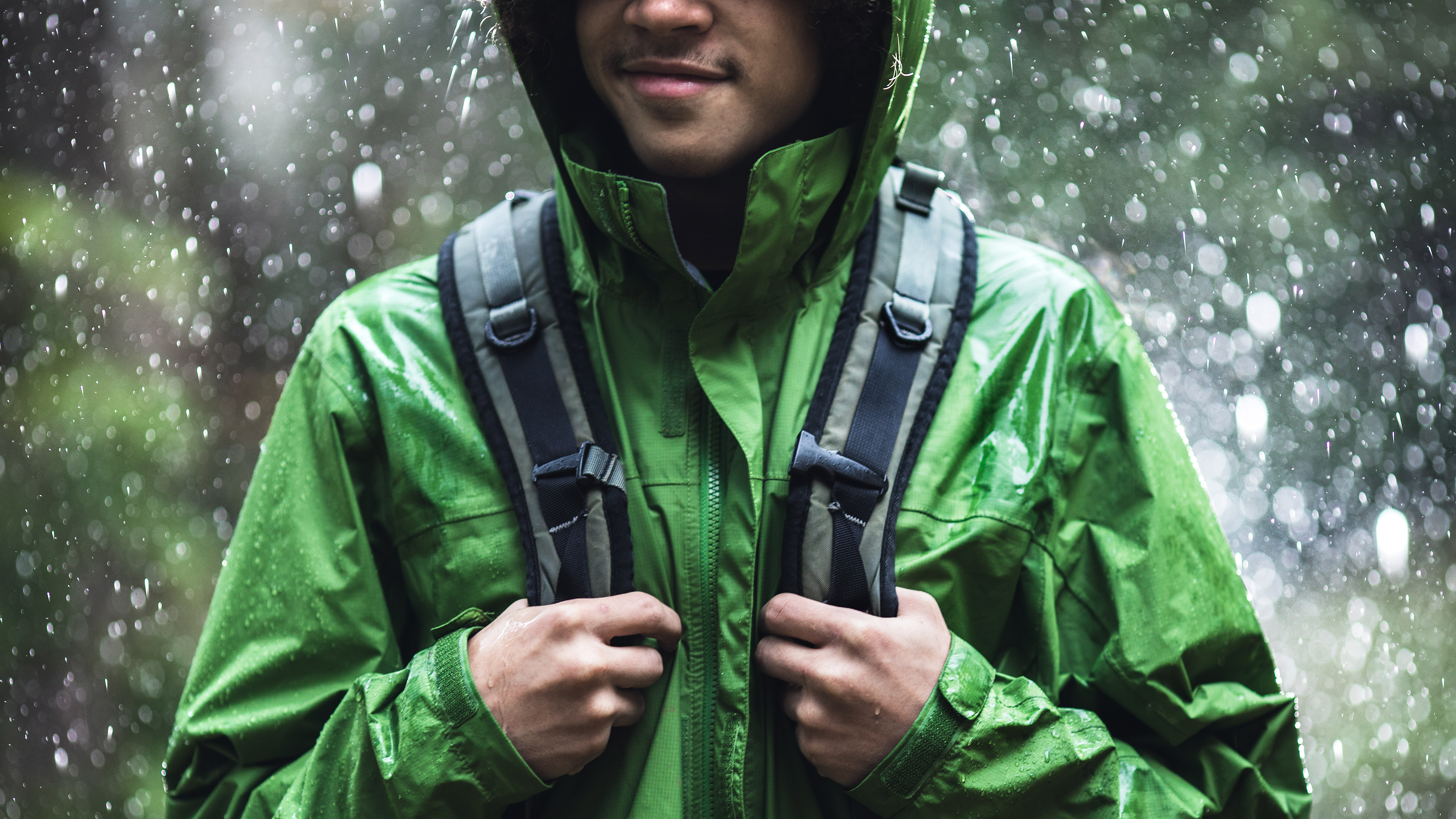
Knowing how to stay dry while hiking can be the difference between enjoyment and misery on those wet days. Along with quality boots and a decent backpack, a waterproof is the most essential item in your kit. Hopefully, most of the time it will stay firmly stashed in the bottom of your pack but when the heavens do open, boy will you be glad you've got it.
So, don’t let rain stop play – pack a reliable waterproof jacket for your hikes. Jackets designed with a Gore-Tex membrane tend to be expensive but are definitely worth the splurge – this technical layer keeps rain out but still lets the jacket breathe, so you stay dry and don’t overheat. Unveiled in 2019, TNF's Futurelight fabric is a breathable waterproof rival to Gore-Tex and also comes highly recommended.
Otherwise, pick a model with a waterproof rating of at least 10,000mm-15,000mm hydrostatic head. Look for a jacket with a well-fitting hood, zippered pockets and ventilation zips under the armpits.
Even the best jackets loose their water repelling qualities after repeated use. It is worth investing in Nikwax's technical cleaning products, which can revitalize your jacket's waterproofing.
6. Hiking pants or trekking tights?
- We recommend hiking pants for men and form-fitting trekking tights for women
- Hiking pants are more durable, faster drying and more protective than stadard trousers

Wondering what to wear hiking on your lower half? We recommend breathable classic-cut hiking pants for men and more form-fitting trekking tights for women (the latter tend to be better designed to women’s bodies, with higher waists). Fjallraven’s range of walking pants and tights are expensive but worth every penny for function and fit.
Some of the best hiking pants also sport reinforced sections on the rear and knees, which are ideal for sitting around your tent on overnight treks, and other brands – for example Berghaus – have a dedicated map pockets, which we have found hugely useful on the trail. Consider pants with removable legs too, which make switching to shorts on a warm day a breeze.
7. Backpack
- For day hikes, look for a pack up to around 35 liters
- For winter hiking, you'll need upwards of 40 liters
- If you're carrying camping equipment you'll also need a bigger pack
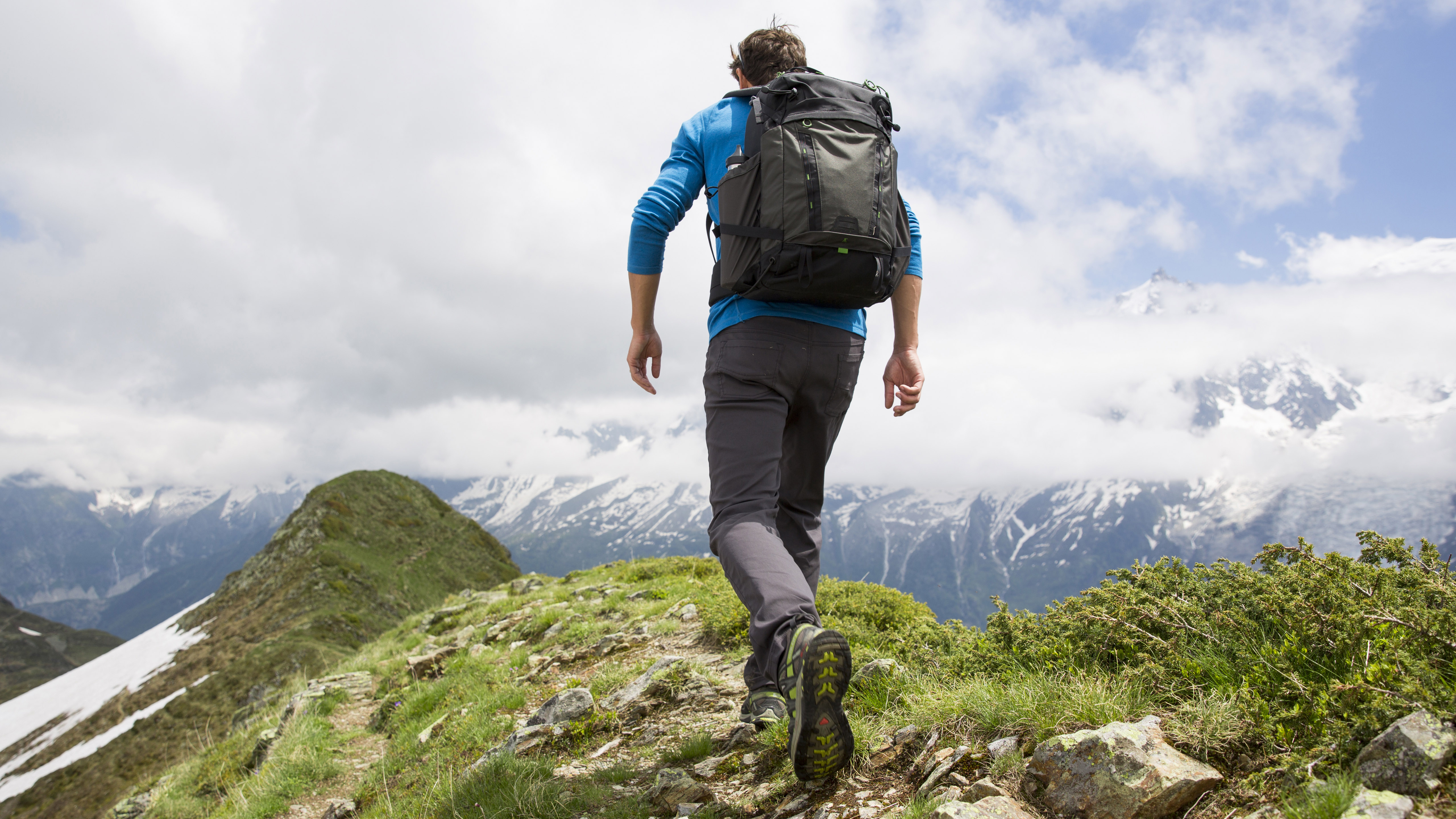
Carry your kit in comfort with a great hiking backpack. If you’re out for a short walk, look for a lightweight daypack with up to 35 litre capacity. If you've got trail running ambitions, you'll want a hydration pack. For longer treks, thru-hiking and multi-day journeys, pick a bigger backpacking pack of 35–70 litres in size. Osprey do a great selection of bags ranging from tiny 9l backs to massive 105 expedition packs (see what size backpack do I need?). Don’t forget to check your pack has a rain cover and plenty of pockets.
The best women's hiking backpacks are specifically designed to fit the female form and therefore differ markedly from men's options. There's also an increasingly diverse selection of dry bags if you're doing activities like kayaking, or if the forecast is particularly grim and you want to keep those precious items bone dry.
8. Accessories
- Spare hats and gloves are always a good idea for the trail
- A headlamp will give you a safety net if you get caught out at night

If you’re venturing into the hills in the shoulder months of spring and autumn and, of course, during winter, it’s a very good idea to have a pair of the best hiking gloves and a hiking hat somewhere you can access them quickly and easily. Often, by the time you’ve conceded you need them, you’re often already cold and a bit fumbly, so choose a pocket in your pack where you know you can locate them. A buff can also be a useful thing to have, for keeping your face warm or protecting it from wind, sun and sand. In warmer weather, carry a cap or sun hat.
When hiking in winter, it's a very good idea to carry a headlamp. That way, if something goes wrong and you get caught out on the trail when night falls, you've still got a light source to help you off the hill.
9. Sun cream
- Decent sunblock is essential, even on cloudy days
- Don't forget to reapply after activities like swimming
- Higher altitudes and snow underfoot increase the amount of UV you're exposed to

Keep your skin safe from the elements with a decent sunblock, and remember that it’s easy to burn on cloudy days, too. For intrepid adventures we always rely on P20, which goes on as a clear liquid and offers protection all day. If you’re going to remember to apply sunscreen, you might as well make sure it’s factor 50 - reapply if you sweat or if you stop for a wild swim.
It's worth remembering that the higher you go, the stronger the sun's UV rays. If you're up high in the Rockies, Alps or Greater Ranges and you're hiking alongside vast snowfields and glaciers you need to be even more vigilant. The sun's rays reflect of the snow's surface, meaning you've got UV coming from all angles!
10. Sunglasses
- Ensure you get a pair of sunglasses that block 100% of UV light
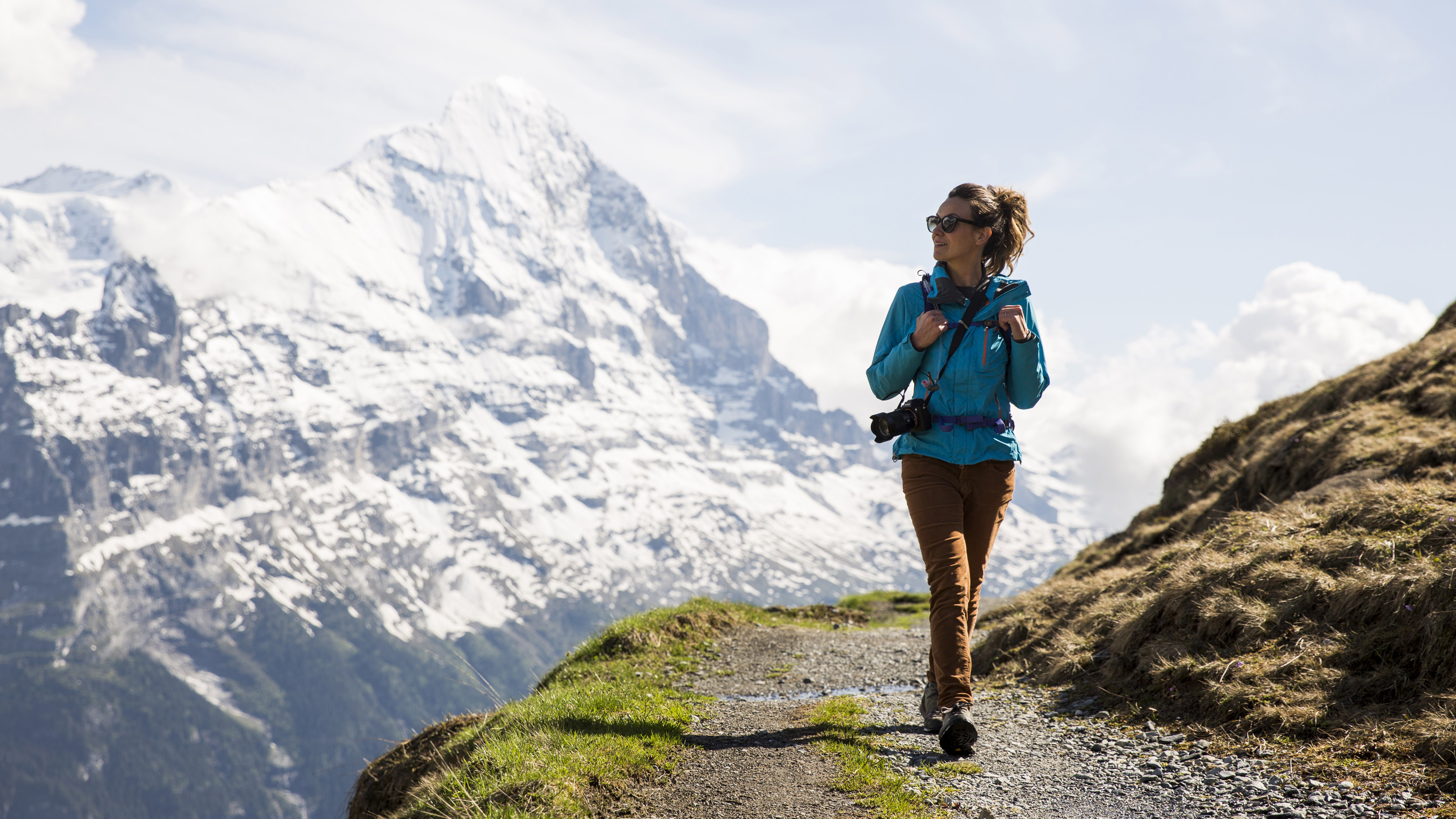
You don’t need to splash loads of cash on expensive sunglasses if you aren’t going on a mountaineering trip, but make sure you do pack a pair of sunnies that block 100% of UV rays (polarised lenses are also good but are designed to cut glare, not UV light).
If you want a pair that can double up for more ambitious treks, choose a wraparound model, which offer more protection for your peepers, from a brand such as Julbo. Once again, throw sunshine and snow into the mix, like a summer trip in the Alps, and you need a high level of protection.
What NOT to wear hiking
- Avoid cotton, including jeans, as it takes a long time to dry
- Casual trainers won't provide the protection, grip and stability of hiking footwear
If you kit yourself out with our list of essentials above, you’re likely to be comfy in fair or foul weather. On more casual short walks, it’s fine to wear non hiking-specific clothing, but if you’re venturing further afield or if the weather looks mixed, it’s a bad idea to rely on clothes that aren’t designed for the elements.
Avoid cotton, including jeans – once cotton gets wet, it takes ages to dry, which can reduce your body temperature fast, as well as being uncomfortable. Casual plimsolls or trainers won’t give you enough protection underfoot and probably won’t be weatherproof, and it sounds obvious, but any shoe or boot with a heel is a terrible idea if you don’t want a broken ankle on the trail.
An award-winning travel and outdoors journalist, presenter and blogger, Sian regularly writes for The Independent, Evening Standard, BBC Countryfile, Coast, Outdoor Enthusiast and Sunday Times Travel. Life as a hiking, camping, wild-swimming adventure-writer has taken her around the world, exploring Bolivian jungles, kayaking in Greenland, diving with turtles in Australia, climbing mountains in Africa and, in Thailand, learning the hard way that peeing on a jellyfish sting doesn’t help. Her blog, thegirloutdoors.co.uk, champions accessible adventures.
